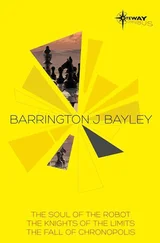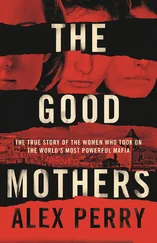Such a change of the formal means of creative production in old age can be assessed in different ways. First and foremost, it has traditionally been viewed as decline decline (Painter 2). The culturally dominant stereotypestereotype of the stages of a human life consists of a so-called peak-and-decline modelpeak-and-decline model (Smiles 17). As depicted in numerous illustrations of the ‘ages of man’ (see e.g. Cole and Edwards 260), human beings are supposed to have reached their physical and social zenith in middle agemiddle age and then begin their descent towards frailtyfrailty, physical and mental decay, and, finally, death. The pattern was subsequently transferred to artists’ work, forming the expectation that old age would inevitably leave its imprint on the creative product, which was consequently perceived as less skillfully shaped (Cohen-Shalev, “Old Age Style” 22; Smiles 17).1 This belief persisted and made it through almost two centuries into the present: as Nicholas DelbancoDelbanco, Nicholas (an ageing writer himself) explains, “[t]here’s no obvious reason why […] writers can’t improve with age – but it’s the rule, not exception, that most of the important work transpires early on” (17). This negative view of late-life creativity currently coexists with an alternative concept that emerged in the early twentieth century: the exceptionalist take. Since it was observed that very few artists – notably GoetheGoethe, Johann Wolfgang von, MonetMonet, Claude, and BeethovenBeethoven, Ludwig van (Zanetti 61; 322) – at an advanced age still wrote, painted, and composed with exceptional skill, these great masters were believed to transcendtranscendence the biological limitations to which mere mortalsmortality were subject. Hence, late stylelate style was increasingly linked to achievementachievement and even geniusgenius (McMullan and Smiles, Introduction 2; Smiles 19–20).
For elderly authors, the late-style debate in art criticism determines to a certain extent how their works will be received, and the choice of a certain style is thus not simply one decision among others for them. Whereas promising younger authors, if they fail to hit the mark with one of their works, may still unfold their full potential at a later stage, in the case of the elderly artist, no such positive development is usually expected. In his essay “The Look of Others,” Jean AméryAméry, Jean notes that an elderly person is “a creature without potentiality” in society’s perception: “People ask no longer: What will you do?” Rather, they will say: “ This is what you have already done” (65, original italics).2 To be old means to be at the end: of life and of artistic progress. From this, it follows that elderly authors must make a special effort to shape their late works, as each new publication could terminate their career.
Links between late works and a supposed artistic ability on the part of their aged authors are sought by scholars as well as by the general audience; however, making connections between art and artists is fraught with complexities. Some of its implications are hinted at in the introductory quote by Robert BurtonBurton, Robert, whose expansion of the Latin aphorism provides ample material to illustrate the problems at hand. John B. Bamborough, in his introduction to the Anatomy of Melancholy , is right to state that it is “a matter for argument” whether Burton believed that “‘the style is the man’” (xxxvi), as already Burton’s choice of words raises some questions: “ Stylus virum arguit , our stile bewraies us,” he writes, “and as Hunters find their game by the trace, so is a mans Genius descried by his workes” (13, original italics).3 Burton thus translates the Latin verb ‘ arguit ’ with ‘to bewray,’ which is a telling choice. Whereas the straightforward meaning of Latin ‘ arguō ’ is to “show, reveal, demonstrate, prove,” thus expressing a neutral connection between the sign ( stilus ) and its referent ( virum ), further meanings include “to bring charge against,” “to prove guilty,” “to prove wrong […],” and “to find fault with, condemn, blame, criticize” (“arguō”). By contrast, ‘to bewray’ has almost exclusively negative denotations, ranging from “to accuse,” “to expose,” and “to divulge” to “unintentionally [revealing] what is intended to conceal” (“bewray”). An artist’s style is thus a double-edged sword, as it may not only reveal one’s geniusgenius (Burton 13), but it could also be turned against the artist. Art critics, the “Hunters [who] find their game by the trace,” to slightly twist Burton’s statement,4 will certainly be inclined to do the latter with ageing authors, unless their genius becomes particularly visible in the work.
In other words, style is the Achilles heel of the ageing artist, a fact of which elderly authors are keenly aware. Based on the discourses of the late-style debate, they expect negative responsesreception to their late work, which consequently produces washback on their texts: the way in which authors employ stylistic devices may thus be geared towards avoiding certain reactions rather than style being a direct expression of the authors’ own preferences. Just as Burton, apprehensive of his readers’ bias and anticipating their possible “censure” (13–14), would “insistently draw attention to [the work’s] own idiosyncracies” (Bamborough xxxvi), ageing authors shape their stylestyle with a critical audience in mind. The fear of being dismissed as an artist with declining creative powers makes itself felt in a consistent highlighting of the work’s form. This has to be taken into account when reading late works.
The fact that authors are wary of the scholarly context in which their works will be received becomes particularly evident in a type of novel or short story which will here be called a late-style narrative . Late-style narrativeslate-style narrative portray an elderly artist figure – an either fictional, historicalhistory, or (semi-)autobiographical character – in his or her search for a new style that will suit the condition of old age. Late style shall thus be at the service of expressing the artist’s ageing self. Yet, the idea that style functions as an aid to old-age identityidentity covers only one aspect of its purposeful use in the late-style narrative. Just as meaningful are the direct connections these narratives establish with the scholarly late-style debate. Constant references to this debate – the use of terms relating to lateness is just one indicator5 – make it evident that late style is no natural, biographical phenomenon in these works. As AmigoniAmigoni, David and McMullanMcMullan, Gordon observe, late style “is arguably more of a cultural invention than a natural phenomenon” (378). If an artist’s style changed naturally as an effect of his or her advanced age, this might show in certain characteristics of his or her writing, such as fragmentarinessfragmentation, abstractionabstraction, or resistance to closureclosure,6 but hardly in explicit references to the concept of late style. Hence, the late-style narrative is a direct engagement with late-style theory . Ageing authors, in anticipation of the possibly negative receptionreception of their late work, criticize and undermine the fixed conventionsconvention of late-style theory, offering their own, artistic alternative in literary form.
1.2 Theorizing the Elderly Artist
Current literary criticism is marked by a profound dearth of artist- and creativity-related studies. The formalist and structuralist movements of the twentieth century, rejecting romantic notions of artistic geniusgenius, purposefully excluded authors and their intentionsauthorial intention, locating the authority over the text’s meaning in its receptionreception. As Roland BarthesBarthes, Roland famously stated, “the birth of the reader must be at the cost of the death of the Authordeath of the author” (“The Death” 148). Hence, if one wishes to theorize the elderly author and describe his or her creative processes in order to gain insight into artistic lateness, one first needs to engage with the scholarly discourse that has traditionally opposed such an author-centered approach.
Читать дальше












